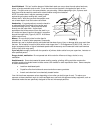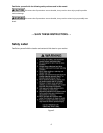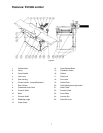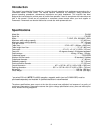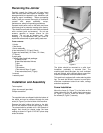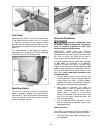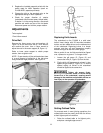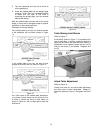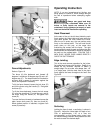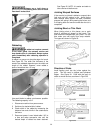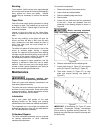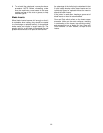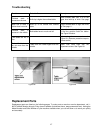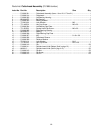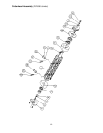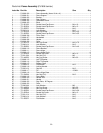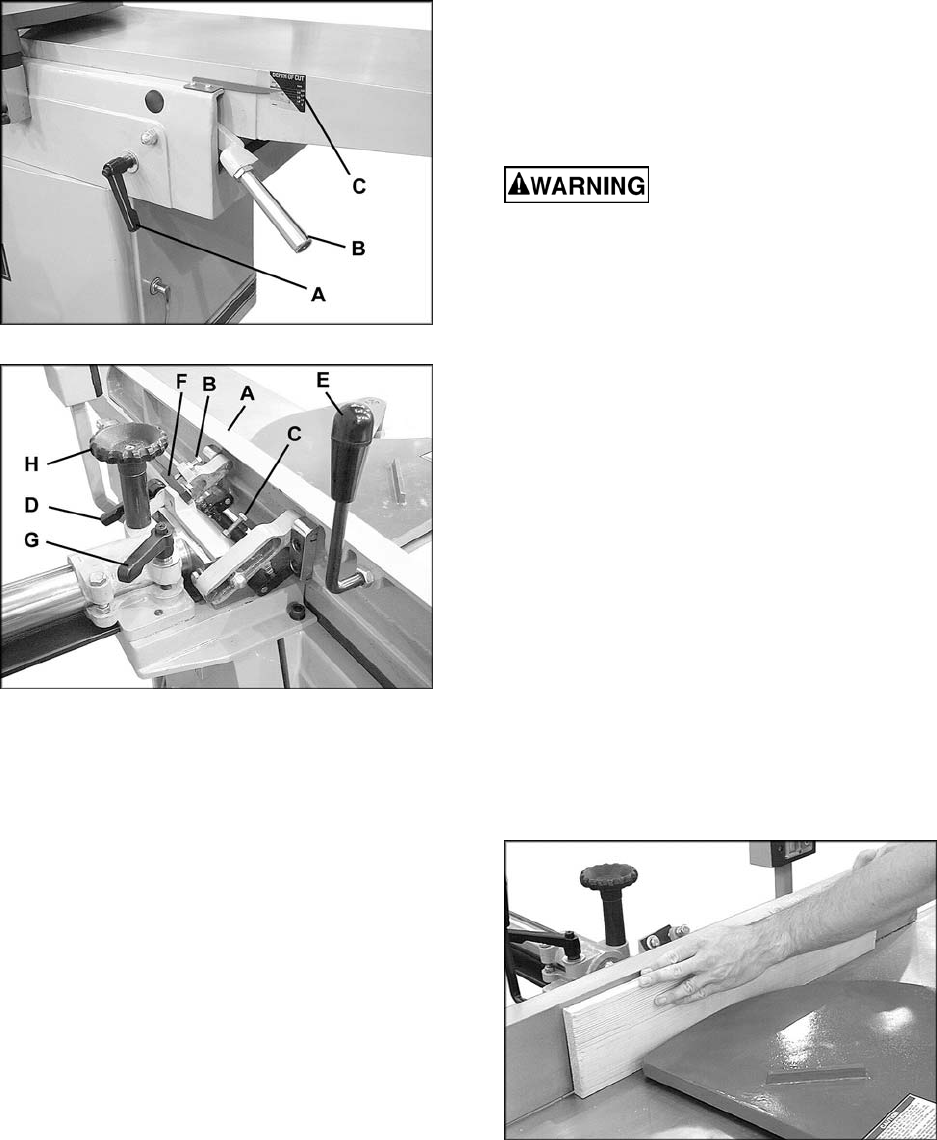
13
Figure 18
Figure 19
Fence Adjustments
Refer to Figure 19.
The fence (A) tilts backward and forward 45
degrees. It contains a 90-degree stop (B) and a 45-
degree stop (C). The stops should be checked for
accuracy with a square or protractor against the
fence, and adjusted if necessary.
To tilt the fence forward, loosen the lock lever (D)
and tilt the fence using the handle (E). Re-tighten
lock lever (D).
To tilt the fence backward, loosen the lock screw
(D), pivot the stop block (F) out of the way, and tilt
the fence using the handle (E). Re-tighten lock
screw (D).
To move the fence forward or backward across the
table, loosen lock screw (G), then turn knob (H).
When desired position is reached, re-tighten lock
screw (G) securely.
Operating Instruction
NOTE: If you are inexperienced at jointing, use
scrap pieces of lumber to check settings and get
the feel of operations before attempting regular
work.
Always use guard and keep
hands away from cutterhead. Make sure all
knives or knife inserts are secured in the
cutterhead. Verify tightness (re-torque) of each
insert on the helical head before operating.
Hand Placement
At the start of the cut, the left hand holds the work
firmly against the infeed table and fence while the
right hand pushes the work toward the knives.
After the cut is under way, the new surface rests
firmly on the outfeed table. The left hand should
press down on this part, at the same time
maintaining flat contact with the fence. The right
hand presses the work forward and before the right
hand reaches the cutterhead it should be moved to
the work on the outfeed table. FOLLOW THE 3
INCH RULE. NEVER PASS HANDS DIRECTLY
OVER THE CUTTERHEAD.
Edge Jointing
This is the most common operation for the jointer.
Set guide fence square with the table. Depth of cut
should be the minimum required to obtain a
straight edge. Do not make cuts deeper than 1/8"
in a single pass. Hold the best face of the piece
firmly against the fence throughout the feed. See
Figure 20.
Figure 20
Surfacing
Jointing the face of stock, or surfacing, is shown in
Figure 21. Adjust the infeed table for depth of cut.
Cuts of approximately 1/16” at a time are
recommended, as this allows better control over
the material being surfaced. More passes can then
be made to reach the desired depth.



